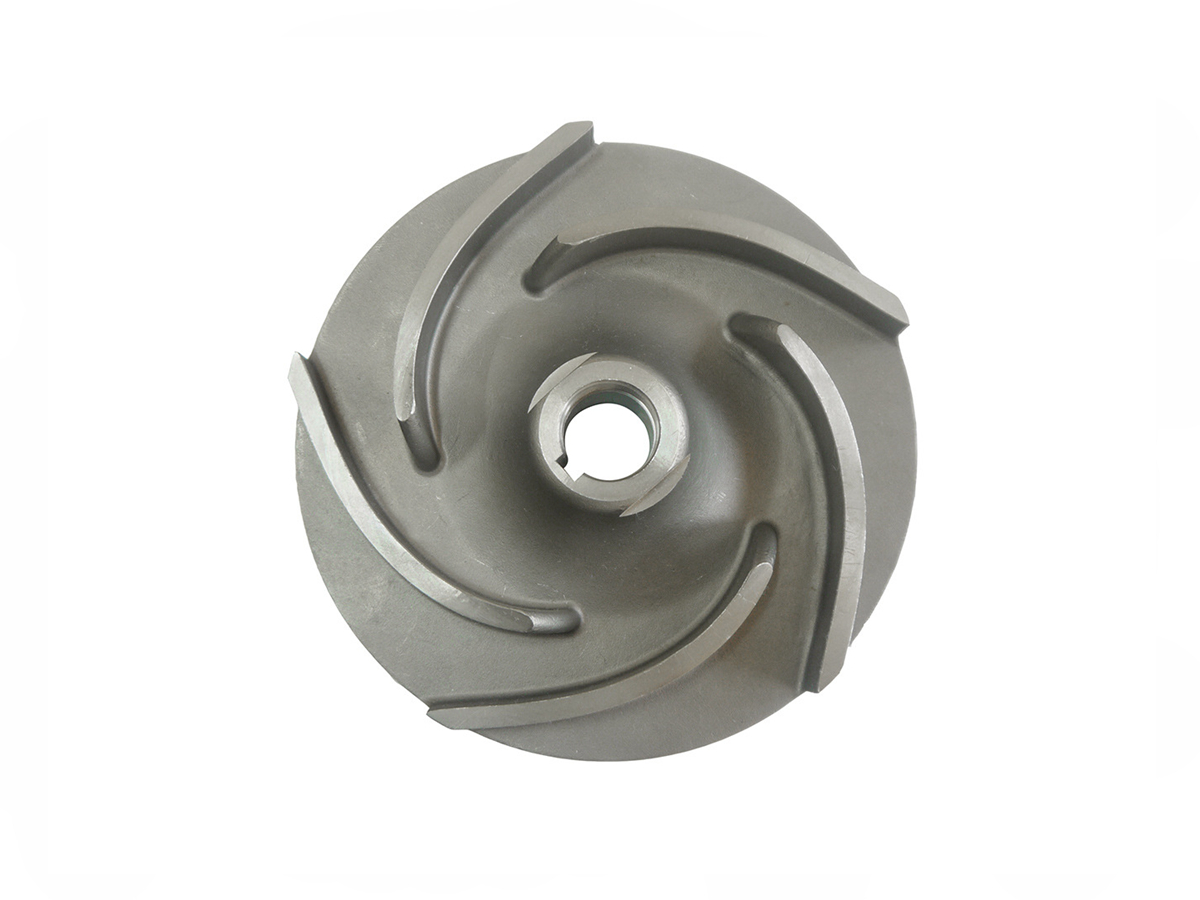Tailored CNC Machining for High-Precision Parts in Nuclear Energy Systems
Introduction to CNC Machining in Nuclear Energy Systems
Precision, reliability, and durability are fundamental to ensuring safe, efficient, and continuous operation in nuclear energy systems. Tailored CNC machining provides the accuracy (up to ±0.003 mm) and superior surface finish required for producing high-precision parts like reactor internals, fuel assemblies, precision valves, and critical structural components. CNC machining effectively processes high-performance materials that endure extreme temperatures (up to 900°C), radiation exposure, and chemically aggressive environments in the nuclear, power generation, and industrial equipment sectors.
Leveraging advanced CNC machining services, manufacturers achieve stringent industry standards and regulatory compliance, optimizing component reliability and significantly enhancing nuclear energy systems' performance and safety.
Material Comparison for Nuclear Energy CNC Components
Material Performance Comparison
Material | Tensile Strength (MPa) | Radiation Resistance | Corrosion Resistance | Typical Applications | Advantage |
|---|---|---|---|---|---|
1200-1390 | Excellent | Outstanding | Reactor internals, springs, fasteners | Superior high-temperature strength and stability | |
520-700 | Good | Excellent | Cooling pipes, reactor supports | Good weldability and corrosion resistance | |
550-700 | Exceptional | Excellent | Fuel rods, reactor core elements | High neutron transparency, exceptional corrosion resistance | |
790-970 | Excellent | Exceptional | Chemical processing components, control valves | Superior corrosion and chemical resistance |
Material Selection Strategy for CNC Machined Nuclear Components
Selecting materials for nuclear energy systems involves evaluating radiation stability, thermal resistance, corrosion durability, and mechanical performance:
Reactor internals and springs requiring high strength (1200-1390 MPa), superior radiation resistance, and thermal stability at temperatures around 750°C significantly benefit from Inconel X-750, ensuring reliable, long-term operation.
Cooling pipes, reactor supports, and moderate-temperature components requiring excellent corrosion resistance and good weldability often utilize Stainless Steel SUS321, offering a practical balance of performance and cost-effectiveness.
Fuel rods and reactor core components demanding high neutron transparency and excellent corrosion resistance frequently select Zirconium Alloys, maximizing reactor efficiency and safety.
Chemical handling systems, valves, and reactor components in highly corrosive environments choose Hastelloy B-3, delivering exceptional chemical resistance and enhanced longevity.
CNC Machining Process Analysis for High-Precision Nuclear Parts
CNC Machining Processes Performance Comparison
CNC Machining Technology | Dimensional Accuracy (mm) | Surface Roughness (Ra μm) | Typical Applications | Key Advantages |
|---|---|---|---|---|
±0.003-0.01 | 0.2-0.5 | Complex reactor parts, turbine components | High precision, intricate geometries | |
±0.005-0.01 | 0.4-1.2 | Cylindrical reactor elements, rods | High accuracy, efficient processing | |
±0.002-0.005 | 0.1-0.4 | Control rod mechanisms, fuel system components | Precise, stress-free machining | |
±0.002-0.005 | 0.05-0.2 | Sealing surfaces, bearing components | Ultra-high precision, exceptional finishes |
CNC Machining Process Selection Strategy for Nuclear Parts
Choosing optimal CNC machining methods for nuclear components requires precise assessment of geometric complexity, dimensional tolerances, surface quality, and functional demands:
Complex reactor parts and turbine components needing extremely tight tolerances (±0.003-0.01 mm) and intricate geometries significantly benefit from Multi-Axis CNC Milling, ensuring superior precision and repeatability.
Cylindrical reactor elements, fuel rods, and similar parts requiring high accuracy and surface quality (±0.005-0.01 mm) efficiently utilize CNC Turning, providing consistent dimensional stability.
Control rod mechanisms and fuel-handling components with intricate internal geometries and tight tolerances (±0.002-0.005 mm) significantly benefit from EDM machining, allowing precise manufacturing without mechanical stress.
High-precision sealing surfaces, bearing interfaces, and critical mating parts demanding exceptional surface finishes (Ra ≤0.2 μm) and accuracy (±0.002-0.005 mm) rely on CNC Grinding, maximizing performance and reliability.
Surface Treatment Solutions for High-Precision Nuclear Parts
Surface Treatment Performance Comparison
Treatment Method | Radiation Resistance | Corrosion Resistance | Max Operating Temp (°C) | Typical Applications | Key Features |
|---|---|---|---|---|---|
Excellent | Excellent (~1200 hrs ASTM B117) | 350 | Reactor internals, coolant system components | Reduces contamination, enhances corrosion resistance | |
Good | Excellent (~1000 hrs ASTM B117) | 300 | Stainless steel coolant pipes, reactor supports | Improves corrosion protection and cleanliness | |
Excellent | Outstanding (~1500 hrs ASTM B117) | 500 | Critical moving assemblies, valves | Exceptional durability, wear, and corrosion resistance | |
Excellent | Excellent (~1200 hrs ASTM B117) | 550 | Reactor valves, bearing surfaces | Increased hardness, fatigue strength |
Surface Treatment Selection Strategy for CNC Nuclear Components
Selecting appropriate surface treatments for nuclear energy parts improves corrosion resistance, radiation tolerance, and operational durability:
Reactor internals and coolant system components benefit from Electropolishing, significantly reducing contamination risks and enhancing surface corrosion resistance.
Coolant piping and reactor supports significantly benefit from Passivation, providing enhanced corrosion resistance and improved surface purity.
Critical moving parts, precision valves, and assemblies exposed to severe operational stress utilize PVD Coating, offering outstanding durability and resistance to wear and corrosion.
Reactor valves, bearing surfaces, and highly stressed components rely on Nitriding to enhance surface hardness, wear resistance, and fatigue life.
Quality Control Standards for CNC Machined Nuclear Parts
Quality Control Procedures
Precision dimensional inspections with Coordinate Measuring Machines (CMM) and optical measurement techniques.
Advanced surface roughness assessments using profilometry to meet rigorous surface finish specifications.
Mechanical property verification (tensile strength, hardness, fracture toughness) per ASTM, ISO, and ASME nuclear standards.
Radiation stability and corrosion testing under realistic nuclear environment simulations.
Non-destructive testing (ultrasonic, radiographic, eddy-current) to ensure structural integrity and defect-free manufacturing.
Comprehensive documentation aligned with ISO 9001, ASME NQA-1, and international nuclear regulatory standards.
Industry Applications of High-Precision CNC Machined Nuclear Parts
Typical Applications
Reactor vessel internals and supports.
Precision turbine and pump components.
Control rod drive mechanisms and assemblies.
Fuel assemblies and precision coolant systems.
Related FAQs:
How does tailored CNC machining benefit nuclear energy systems?
What materials are optimal for high-precision CNC machined nuclear components?
Which CNC processes achieve the highest precision for nuclear energy parts?
How do surface treatments enhance nuclear component performance?
What quality standards apply to CNC machined parts in the nuclear industry?

